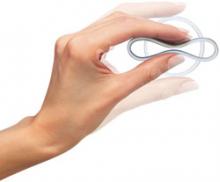This study highlights another off-label issue: Women in Group 2, who were allowed to remove the ring for 4 day-intervals to decrease breakthrough bleeding, were instructed to reinsert the same ring after 4 days and keep it in place until the next scheduled replacement date. But the manufacturer does not recommend reinsertion of a ring that has been out of the body for more than 3 hours. In my practice (KR), women are generally unwilling to store and replace a ring, preferring to place a new one after removal for more than a few hours.
Should she try continuous use?
Changing the ring on the same date each month may boost adherence for some women. Funding. The research was funded by an unrestricted educational grant from Organon, Inc, the manufacturer of NuvaRing, which included salary support for 5 of the 6 authors. The published study gives no additional information about the involvement of the pharmaceutical company.
Contraindications, drug interactions. As with other combined hormonal contraceptives, women who have a history of venous thromboembolism, headaches with focal neurological symptoms, severe hypertension, breast or endometrial cancer, or liver disease, and smokers older than 35 years should not use the contraceptive ring.4 In addition, women need to be aware that a number of medications—griseofulvin, rifampin, phenytoin, carbamazepine, and herbal products containing St. John’s Wort, among others—may reduce the effectiveness of the contraceptive ring.4
CHALLENGES TO IMPLEMENTATION: Going off-label isn’t for everyone
When it comes to choosing a contraceptive method, patient preference is paramount. Some women may not be comfortable inserting or removing the ring and should be counseled on other forms of contraception. Women who prefer to bleed every month should not use extended cycling. Similarly, some physicians may not be comfortable recommending an off-label use of the ring.
Those who are comfortable making the recommendation should be prepared to educate patients about this method of contraception and to discuss the benefits of extended or continuous use of the ring. For some women, the memory-triggering mechanism of changing the ring on the same date each month may boost adherence. For others, replacing the ring every 28 days may be acceptable—again, depending on patient preference.
Acknowledgements
The PURLs Surveillance System is supported in part by Grant Number UL1RR024999 from the National Center for Research Resources, a Clinical Translational Science Award to the University of Chicago. The content is solely the responsibility of the authors and does not necessarily represent the official views of the National Center for Research Resources or the National Institutes of Health.
PURLs methodology
This study was selected and evaluated using FPIN’s Priority Updates from the Research Literature (PURLs) Surveillance System methodology. The criteria and findings leading to the selection of this study as a PURL can be accessed at www.jfponline.com/purls.


